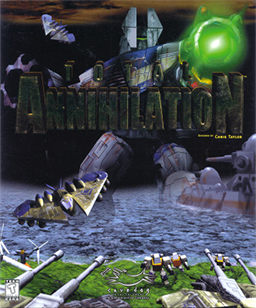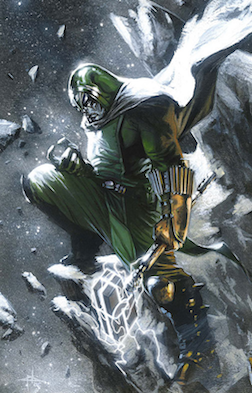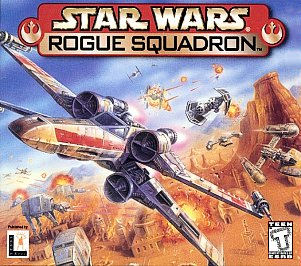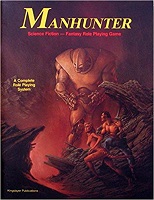
The Galactic Republic, commonly known as The Republic, is a fictional political entity in the Star Wars universe that predates the formation of the Galactic Empire. It is prominently featured in the prequel trilogy of Star Wars films, offering a glimpse into its history and functioning. In the original trilogy, which takes place after the events of the prequels, the Republic is referred to as the Old Republic, suggesting its long-established nature. In the prequel era, which takes place during the last years of the Republic, the term "Old Republic" referred to the Galactic Republic of ancient time, which was reorganized into the modern Republic a thousand years before the Battle of Yavin.

Total Annihilation is a science fiction real-time strategy video game released in September 1997 for Microsoft Windows and Mac OS by Cavedog Entertainment and distributed internationally by GT Interactive. Two expansion packs were released in 1998, The Core Contingency on April 29 and Battle Tactics on July 20, while a medieval-themed spin-off called Total Annihilation: Kingdoms was released on June 25, 1999.

Descent: FreeSpace – The Great War, known as Conflict: FreeSpace – The Great War in Europe, is a 1998 space combat simulation IBM PC compatible computer game developed by Volition, when it was split off from Parallax Software, and published by Interplay Productions. In 2001, it was ported to the Amiga platform as FreeSpace: The Great War by Hyperion Entertainment. The game places players in the role of a human pilot, who operates in several classes of starfighter and combats against opposing forces, either human or alien, in various space-faring environments, such as in orbit above a planet or within an asteroid belt. The story of the game's single player campaign focuses on a war in the 24th century between two factions, one human and the other alien, that is interrupted in its fourteenth year by the arrival of an enigmatic and militant alien race, whose genocidal advance forces the two sides into a ceasefire in order to work together to halt the threat.
The concept of self-replicating spacecraft, as envisioned by mathematician John von Neumann, has been described by futurists and has been discussed across a wide breadth of hard science fiction novels and stories. Self-replicating probes are sometimes referred to as von Neumann probes. Self-replicating spacecraft would in some ways either mimic or echo the features of living organisms or viruses.

Mighty Orbots is a 1984 American-Japanese super robot animated series created in a joint collaboration of TMS Entertainment, Inc. and Intermedia Entertainment in association with MGM/UA Television. It was directed by veteran anime director Osamu Dezaki and features character designs by Akio Sugino. The series aired from September 8, 1984, to December 15, 1984, on Saturday mornings in the United States on ABC.

Cosmic Encounter is a science fiction–themed strategy board game designed by "Future Pastimes" and originally published by Eon Games in 1977. In it, each player takes the role of a particular alien species, each with a unique power to bend or break one of the rules of the game, trying to establish control over the universe. The game was inducted into the Academy of Adventure Gaming Arts & Design Adventure Gaming Hall of Fame in 1997.

Star Wars: Galactic Battlegrounds is a real-time strategy video game set in the Star Wars universe. It was developed by LucasArts. It was released in November 2001. An expansion pack, Clone Campaigns, was released on May 14, 2002, adding two new factions and campaigns. Later that year, both Galactic Battlegrounds and Clone Campaigns were released in a box set, Star Wars: Galactic Battlegrounds Saga.

Galactic Civilizations II: Dread Lords is a 4X turn-based strategy by Stardock for Microsoft Windows. It is the sequel to the 2003 game, Galactic Civilizations, and was released at retail and on Stardock's online subscription service, TotalGaming.net, on February 21, 2006. An expansion, Dark Avatar, was released in February 2007. A second expansion, Twilight of the Arnor, was released in April 2008.

Ronan the Accuser is a character appearing in American comic books published by Marvel Comics. Created by writer Stan Lee and artist Jack Kirby, he first appeared in Fantastic Four #65. In his comic book appearances, Ronan is depicted as the Supreme Accuser of the Kree Empire, the militaristic government of the alien Kree, and commonly serves as an adversary of superhero teams such as the Fantastic Four, the Avengers, and the Guardians of the Galaxy. Initially portrayed as a supervillain, the character would later be presented as a more noble and honorable figure. Ronan has even been married to the Inhuman Crystal, a princess of the Inhuman Royal Family.

Star Wars: Rogue Squadron is an arcade-style flight action game co-developed by Factor 5 and LucasArts. The first of three games in the Rogue Squadron series, it was published by LucasArts and Nintendo and released for Microsoft Windows and Nintendo 64 in December 1998. The game's story was influenced by the Star Wars: X-wing – Rogue Squadron comics and is set in the fictional Star Wars galaxy, taking place primarily between events in the films Star Wars and The Empire Strikes Back. The player controls Luke Skywalker, commander of the elite X-wing pilots known as Rogue Squadron. As the game progresses, Skywalker and Rogue Squadron fight the Galactic Empire in 16 missions across various planets.
Death or Glory is a science fiction novel by Vladimir Vasilyev, first published in Russian in 1998, then translated into English in 2004 by Capricorn Publishing. The first part of Death or Glory may be read online.

Warhammer 40,000: Dawn of War – Dark Crusade is the second expansion to the real-time strategy video game Warhammer 40,000: Dawn of War developed by Relic Entertainment and published by THQ. Based on Games Workshop's tabletop wargame, Warhammer 40,000, Dark Crusade was released on October 9, 2006. The expansion features two new races, the Tau Empire and the Necrons. Including the Imperial Guard from Dawn of War's first expansion pack Winter Assault, a total of seven playable races in this expansion.

Total Annihilation: Battle Tactics is the second expansion pack for the real-time strategy video game Total Annihilation, released on June 30, 1998 in the United States. Its features include 100 new missions as either the Arm or the Core, four new units and new keyboard shortcuts. Six new multiplayer maps are included, and, for the first time in the Total Annihilation series, some single-player missions are set on acid and crystal worlds.

Race for the Galaxy (RftG), or simply Race, is a card game designed by Thomas Lehmann. It was released in 2007 by Rio Grande Games. Its theme is to build galactic civilizations via game cards that represent worlds or technical and social developments. It accommodates two to four players by default although expansions allow for up to six players, as well as solo play. The game uses iconography in place of language in some places, with complex powers also having a text description. While appreciated by experienced players for being concise, some new players find the icons difficult to learn and to decipher.
Metroid is a series of nonlinear science fiction action games published by Nintendo, featuring side-scrolling, metroidvania, and first-person shooter elements. The player character and protagonist of the series is Samus Aran, a space-faring bounty hunter who battles Space Pirates and a species called the Metroid.

Supreme Commander is a 2007 real-time strategy video game designed by Chris Taylor and developed by his company, Gas Powered Games. The game is considered to be a spiritual successor, not a direct sequel, to Taylor's 1997 game Total Annihilation, and also the Spring remake. First announced in the August 2005 edition of PC Gamer magazine, the game was released in Europe on February 16, 2007, and in North America on February 20.

Manhunter is a role-playing game originally published by Kingslayer Productions in 1988.














